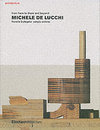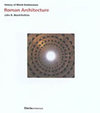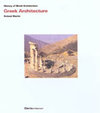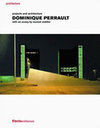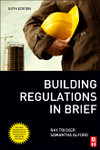
1970 architecture
Source: Wikipedia. Pages: 32. Chapters: Aswan Dam, Three Rivers Stadium, Riverfront Stadium, Early Founders Memorial Stone, Royal Commonwealth Pool, Württembergische Landesbibliothek, Estadio Elías Aguirre, Olivetti-Underwood Factory, Berkeley Art Museum... Viac o knihe
Produkt je dočasne nedostupný
14.87 €
bežná cena: 16.90 €
O knihe
Source: Wikipedia. Pages: 32. Chapters: Aswan Dam, Three Rivers Stadium, Riverfront Stadium, Early Founders Memorial Stone, Royal Commonwealth Pool, Württembergische Landesbibliothek, Estadio Elías Aguirre, Olivetti-Underwood Factory, Berkeley Art Museum and Pacific Film Archive, Regenstein Library, Mushroom House, Park Inn Berlin, Henry Memorial Center, Centro Cultural General San Martín, Danmarks Nationalbank, Cathedral of Brasília, Claire Trevor School of the Arts, PostFinance Arena, Sundrome, One HSBC Center, One Boston Place, Wah Fu Estate, World Trade Center, Stock Exchange Tower, Daniel Building, 11 Stanwix Street, Five Penn Center, First National Bank Building, One Indiana Square, Tour Les Poissons, 1970 in architecture, Ordway Building, Leaside Towers, Fiberglas Tower, Euston Tower, St. David's Church, Shenley Green, Trust Bank Building, La Palmera, Mutual of Omaha Building, Ping Shek Estate, Lauinger Library, Burnside Hall, Drama Studio, University of Sheffield, Herman Clark Stadium, Obelisk of São Paulo, Midland Building, Basketball Center of Moscow Region, Palacio de los Deportes de León, Buccaneer Field, Tour Aurore, Belmopan Public Library. Excerpt: The Aswan Dam is an embankment dam situated across the Nile River in Aswan, Egypt. Since the 1950s, the name commonly refers to the High Dam, which is larger and newer than the Aswan Low Dam, which was first completed in 1902. Construction of the High Dam became a key objective of the Egyptian Government following the Egyptian Revolution of 1952, as the ability to control the flood waters, and harness the hydroelectric power that it could produce, were seen as pivotal to Egypt's industrialisation. The High Dam was constructed between 1960 and 1970. It aimed to increase economic production by further regulating the annual river flooding and providing storage of water for agriculture, and later, to generate hydroelectricity. The dam has had a significant impact on the economy and culture of Egypt. Before the dams were built, the Nile River flooded each year during late summer, as water flowed down the valley from its East African drainage basin. These floods brought high water and natural nutrients and minerals that annually enriched the fertile soil along the floodplain and delta; this made the Nile valley ideal for farming since ancient times. Because floods vary, in high-water years, the whole crop might be wiped out, while in low-water years widespread drought and famine occasionally occurred. As Egypt's population grew and conditions changed, both a desire and ability developed to control the floods, and thus both protect and support farmland and the economically important cotton crop. With the reservoir storage provided by these dams, the floods could be lessened, and the water could be stored for later release. The earliest recorded attempt to build a dam near Aswan was in the 11th century, when the Arab polymath and engineer Ibn al-Haytham (known as Alhazen in the West) was summoned to Egypt by the Fatimid Caliph, Al-Hakim bi-Amr Allah, to regulate the flooding of the Nile, a task requiring an early attempt at an Aswan Dam. After his field work convinced him o
- Vydavateľstvo: Books LLC, Reference Series
- Formát: Paperback
- Jazyk:
- ISBN: 9781156156032


 Anglický jazyk
Anglický jazyk 


